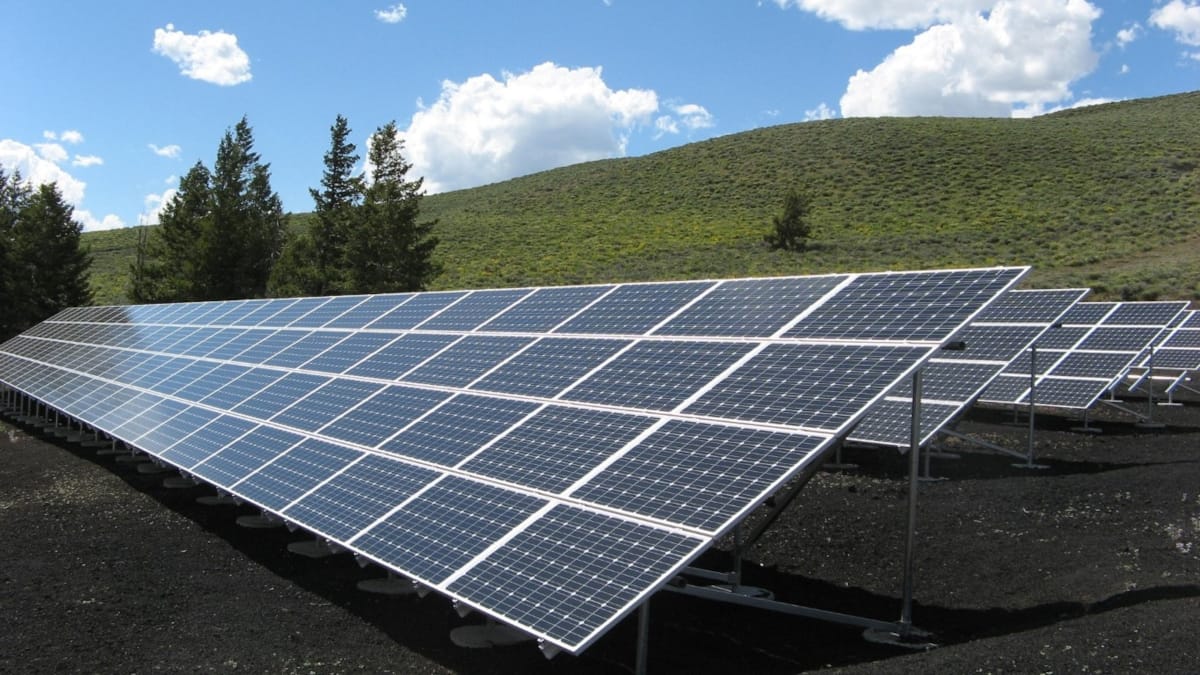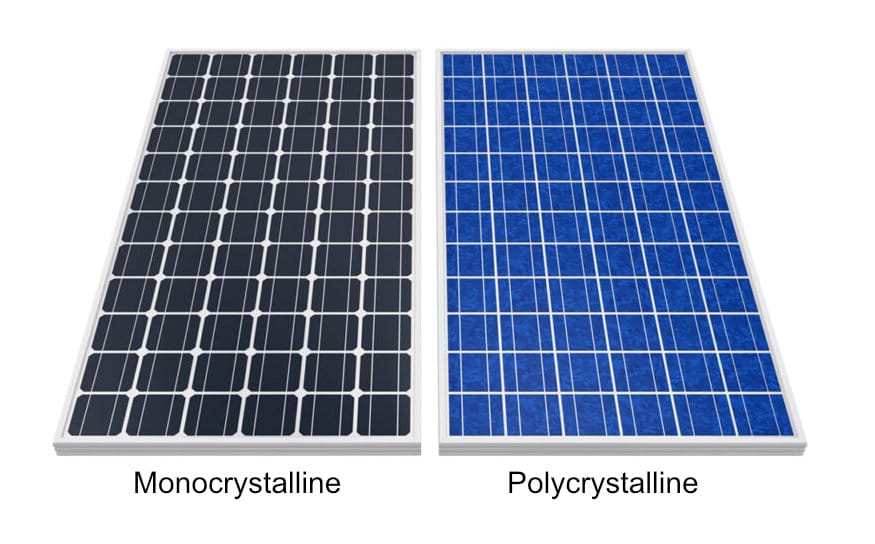If you are planning to build your tiny house to be off-grid capable, you are highly likely considering powering your home with a solar power system. A big part of that system will be the solar panels themselves. When researching panels, you’ll find that there are many options to consider. In this article we’ll break down all those decisions to help you make the best selection for your tiny house.
Mounting Location and Options
Before we discuss the panels themselves, one decision you will want to consider early on is where you plan to mount your panels. Specifically, will they be mounted on the roof of your home or on the ground.

If you plan to move your house frequently, you will want your panels to be mounted on the roof of your home. This will save you the hassle of setting up your panels at every stop as well as reduce the chance that the panels get damaged or stolen. This will also allow them to generate electricity while you are on the move.
However, most people in tiny houses don’t move them that often. In that case, mounting the panels on the ground can give you some big benefits. A ground mount is a standalone metal or aluminum framework built to mount the solar array on. Assuming you have the room, having the panels mounted on the ground allows the panels to be placed in a location that is different from the house itself. For instance, you might want your home to be located under a nice shade tree, which wouldn’t be an excellent choice if your panels are roof mounted.
It can also be beneficial to move the panels to face the angle of the sun, which changes with the seasons. This is much easier to accomplish if your panels are ground based.
Finally, if your panels are mounted on the ground, the size of your solar panel array is not restricted to the size of the roof of your tiny house. This is important for people planning smaller tiny houses or for those with larger power needs.
Types of Solar Panels
There are different technologies used when manufacturing solar panels. Some of these technologies are more efficient at converting sunlight into electricity than others. This results in the more efficient panels being able to generate the same amount of power in less space than less efficient panels.
Efficiency refers to the ratio of usable energy output to the total energy input from sunlight. Higher efficiency panels can convert more sunlight into electricity, making them more space-efficient, which is really important if you plan to mount your panels on the roof of your tiny home.
In general, since size is usually a consideration with tiny houses, regardless of where you plan to mount the panels, we recommend buying the most efficient panel type available.

Monocrystalline Solar Panels
These panels are made from single-crystal silicon wafers and are known for their high efficiency. Their uniform appearance and high energy conversion efficiency make them a popular choice for residential installations, including tiny houses.
Polycrystalline Solar Panels
Created from multiple silicon crystals, polycrystalline panels are cost-effective but slightly less efficient than monocrystalline panels. They are recognizable by their speckled blue appearance.
Thin-Film Solar Panels
Thin-film technologies involve depositing semiconductor material in thin layers on a substrate. While they are less efficient, they are flexible and lightweight, making them suitable for unconventional applications, like building-integrated photovoltaics (BIPV) and portable devices. These can also be convenient for curved roof vehicles like vans or airstream travel trailers.
Bifacial Solar Panels
These panels capture sunlight from both sides, maximizing energy production by reflecting and absorbing light from the surroundings. They are particularly effective in environments with reflective surfaces. If you plan to mount your panels on your roof, there likely won’t be much light reflecting up to take advantage of the bifacial properties of the panel. However, if the panels are ground mounted on an elevated mount, reflected sunlight from the ground can make these panels more efficient. Especially during snowy weather where the top of the panel might become covered, but the ground becomes highly reflective.
Solar Panel Voltage
Solar panels come in a variety of voltages. These voltages don’t necessarily need to match the voltage of your system, if you are connecting the panels to your system using an MPPT (Maximum Power Point Tracking) charge controller. They will however need to fall within the range that is accepted by the charge controller. For instance, your system may be designed to run on 12V power, so the inverter takes in 12V, the batteries are configured to work on 12V, but the panels can be 36V panels. This is possible because the MPPT charge controller will adjust the voltage and current of the panels to match the system.
Shade Tolerance
One final factor to consider is a solar panels shade tolerance. Occasionally, a panel may be partially shaded, for instance if you park your home in a location where a portion of the house is under tree cover. Some panels are constructed such that even just a small amount of shading can significantly impact the panel’s ability to generate power. Some panels mitigate this effect by using smaller individual cells, referred to as half-cell’s. This allows them to continue to generate power even when a portion of the panel is covered. On a conventional home, where the shade conditions don’t change that much, this may not be that essential. But on a movable structure, it is much more important.
Our Recommendation
For the tiny house solar energy system we designed in our Tiny House Solar Guide, we selected Renogy 450 Watt Monocrystalline panels (they have since been upgraded to be bifacial which may provide additional benefits depending on where they are mounted). These panels are highly efficient, a great size for a tiny house (larger so they require less mounting hardware, but also not too big to handle), shade tolerant, and finally from a reputable brand which includes a warranty.
Solar panels have come a long way since their inception, with efficiency gains and technological advancements propelling them to the forefront of the renewable energy revolution. The choice of solar panel type should be based on factors such as efficiency, available space, budget, and environmental conditions. As research and innovation continue, solar panels are likely to become even more efficient, affordable, and accessible, playing a vital role in shaping a greener and more sustainable future.